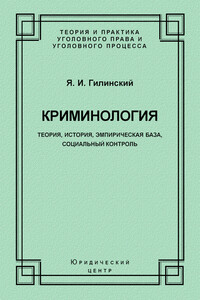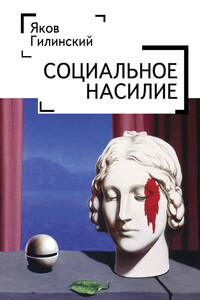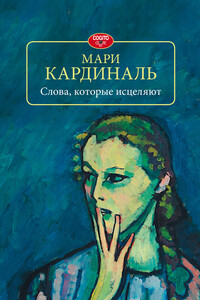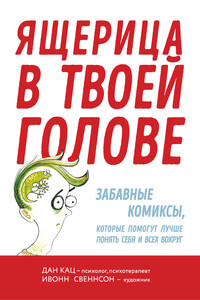Девиантность, преступность, социальный контроль в обществе постмодерна - [97]
Social control is the mechanism of self-organizing and self-preservation of society by the establishment and maintenance of normative order, by elimination, neutralization, or minimization of deviant behavior (including crimes). Two basic methods of social control are encouragement and punishment («bait and switch»).
The social control over criminality includes general methods of social control – punishment, «war on crime» by means of reprisals, and crime prevention. Mankind has tried all means of reprisal, including qualified kinds of death penalty and refined torture. However, criminality for some reason, has not disappeared…
There are some points of view that exists about what inhibis control of crime – «crisis of punishment» (Mathiesen, 1974), crisis of the criminal justice systems, crisis of the criminal-law control over criminality, including the control of police (Christie, 1981; Davis and Anderson, 1983; Pep-inski and Quinney, 1991; Hendrics and Byer, 1996; Rotwax, 1996; Christie, 2000, and others). Movement of abolitionism develops and grows towards cancellation not only of the death penalty, but also towards replacement of imprisonment by alternative measures of punishment, for transition from the retributive justice to the restorative justice (Morris, 1989; Zehr, 1990; Consedine, 1995; and others).
R. Lenoir (1974) and S. Paugam (1996), N. Luhmann (1998) and J. Young (1999) wrote about the new social global situation – the tendency to divide people and societies into inclusive and exclusive. «Inclusive» is the personality inclusive in the functional system. «Exclusive» can be only individual not inclusive in the functional system, who are known only by existence (Luh-mann). The distinction of inclusion/exclusion exist between countries (global inclusion/exclusion) and between people within some countries (national inclusion / exclusion).
From our point of view, the social and economic inequality is one of the biggest criminogenic factors. People have real opportunities to satisfy their needs, depending on their belonging to one or the other social class, stratum, and group or depending on their social and economic status. Inequality of opportunity generates social conflict, dissatisfaction, envy, and at last, various forms of deviation. The process of inclusion/exclusion is acquiring more and more criminogenic and deviantogenic significance, both for the contemporary world and for the future. It is clear that «excluded people» are becoming a mass reserve, a social basis of social deviation, including criminality.
Repressive social control is the best means of exclusion, especially through the issue of selection in the police and the judiciary. There appears to be a cir-culus vitiosus (vicious circle). The repressive mode of social control enhances the amount of the excluded people. The more people are excluded, the higher the deviance (including crime) rate seems to be. The higher the rate of deviance, the more repressive the social control is considered to be.
The basic tendencies of the theory (and in the practice of some countries) of the modern Western policy of the social control over criminality are as follows:
• Recognition of irrationality and inefficiency of the reprisals («crisis of punishment»),
• Change of the strategy of social control from «war» to «peace» and «peacemaking» (Pepinski and Quinney).
• Search for alternative (non-repressive) measures of social reaction.
• Priority of crime prevention (for our opinion about crime prevention see: Gilinskiy, 1998).
• Realization of the conceptof «restorative justice».
• Realization of the concept of «community policing».
The interrelation between the police and the population is old («eternal») and is a complicated problem. The centuries old experience shows that these relations between the police and the public a not friendly and ideal. The increase of crimes after the World War II, «fear of crime» and «moral panic» activate the search for effective methods and means of social control over crime. One of the strategies developed is community policing (Kury, 1997; Lab, Das, 2003; Skogan, Hartnett, 1997). The notion of community policing is not very easy. It has many definitions (Lab, Das, 2003: 4-9). The main idea of «community policing» is the partnership and, cooperation between the police and the community (population, citizens) for better crime prevention. The police render service to citizens (tax-payers). It is a pity, that the partnership between the Russian «Militia» and the community is an illusion in contemporary Russia.
The real strategy of criminal policy is absent in Russia. There are some de jure programs, but there are not really operational without the financing, mechanism for realization. Unfortunately,

Предлагаемая вашему вниманию книга – второе, переработанное и дополненное издание монографии известного ученого-криминолога, которое может служить учебником криминологии для студентов и аспирантов. Первое издание вышло в 2002 г. и давно стало «библиографической редкостью». Автор излагает кроме общепринятых свои собственные представления о науке криминологии, преступности, ее видах, а также о реакции общества и государства на преступность. Может быть рекомендована студентам, аспирантам, преподавателям криминологии, а также всем, кто интересуется проблемой «преступления и наказания». 2-е издание, переработанное и дополненное.

Войны и насильственная преступность сопровождают человечество всю его историю и давно служат предметом изучения историков, политологов, юристов, социологов. А вот «воспитательное насилие», экономическое насилие, насилие в спорте, религиозное насилие, насилие государства против своих граждан стали объектом специального исследования лишь в ХХ веке. В предлагаемой монографии автор высказывает свою точку зрения на социальную природу насилия и его различных проявлений.Книга может представить интерес для философов, политологов, социологов, юристов и всех, интересующихся проблемой насилия в обществе.

В книге Ирис Юханссон мир ребенка-аутиста описан «изнутри», на собственном опыте. Однако этим уникальность истории Ирис не ограничивается. Это еще и история необыкновенного родительского опыта: отец Ирис, шведский крестьянин, без чьей-либо профессиональной помощи понял проблемы своей дочери. Благодаря его любви, вниманию и отзывчивости Ирис, бывшая ребенком с «глубокими нарушениями общения», сумела их преодолеть. Она стала психологом, консультирующим педагогов и родителей. Книга адресована широкому кругу читателей.

«Слова, которые исцеляют» (1975) – одна из самых известных книг Мари Кардиналь – написана на основе ее собственного опыта в психоанализе. Изображен тот период и те условия, что привели автора к психической нестабильности, а затем к постепенному выздоровлению. Сюжет вращается вокруг женщины, переживающей эмоциональный срыв, порожденный ее отношениями с матерью. Героиня проходит длительный курс психоанализа. Постепенно она понимает, что была не в состоянии справиться с жесткими рамками кодекса поведения патриархальной системы, регулирующими ее жизнь с детства.

В своей книге я написала все свои препятствия, страхи на пути к выздоровлению. Я уверена, что каждый из вас найдет именно в ней именно то, что в данный момент нужно. Между строк можно увидеть себя и провести параллель, даже если у вас вопрос, проблема, связаны не со здоровьем, как у меня. Мне будет приятно услышать от вас лично, чем была полезна моя книга. Для меня это важно, ведь творчество мое не имеет границ и готова написать вам следующую книгу, которая будет так же вам полезна, как и эта.

Человек есть по замыслу Бога существо богоподобное, и потому его нормальная жизнь возможна не иначе, как в общении с Богом, чтобы достигнуть своего истинного назначения и вечного блаженства. История грехопадения Адама и Евы повлияла на все последующее развитие человечества. Принципиальное значение грехопадения наших прародителей заключалось прежде всего в том, что человек перенес центр своей жизни и деятельности с Бога на самого себя. Созданный Богом человек сознательно и свободно решился вместо воли Божией поставить свою волю началом своей жизнедеятельности, самого себя и свою самость сделать центром существующего мира и целью своей жизни.

У кого-то в голове внутренний критик, у кого-то – внутренний котик, а у кого-то – ящерица. Вот такой образ придумал шведский психолог и психотерапевт Дан Кац. В один прекрасный день он понял, что с помощью ярких метафор и забавных картинок у него получается легко и доступно объяснить пациентам суть проблемы, которая их волнует, и помочь им разобраться в себе. Так что если вас что-то тревожит, если вы закопались в глубинах своего «я», если вам не дает покоя ваша «ящерица», срочно читайте эту книгу, которая не только рассмешит и поднимет настроение, но и позволит посмотреть на свои проблемы со стороны, отпустить ситуацию и освободит от ненужного беспокойства.

Раскрываются причины уникального явления общества, характерного для всех цивилизованных стран, — малой продолжительности жизни врачей, среднее значение которой на 15–20 лет ниже жизни их пациентов. Показано, что среди причин имеются такие необычные, как высокая чувствительность и культ смерти. Представлены теория Любви, Разума и Жизни, а также теория Смысла Жизни и теория преждевременной старости. Формулируются положения духовной психологии. Предложен авторский взгляд на концепцию Человека, болезни и здоровья.